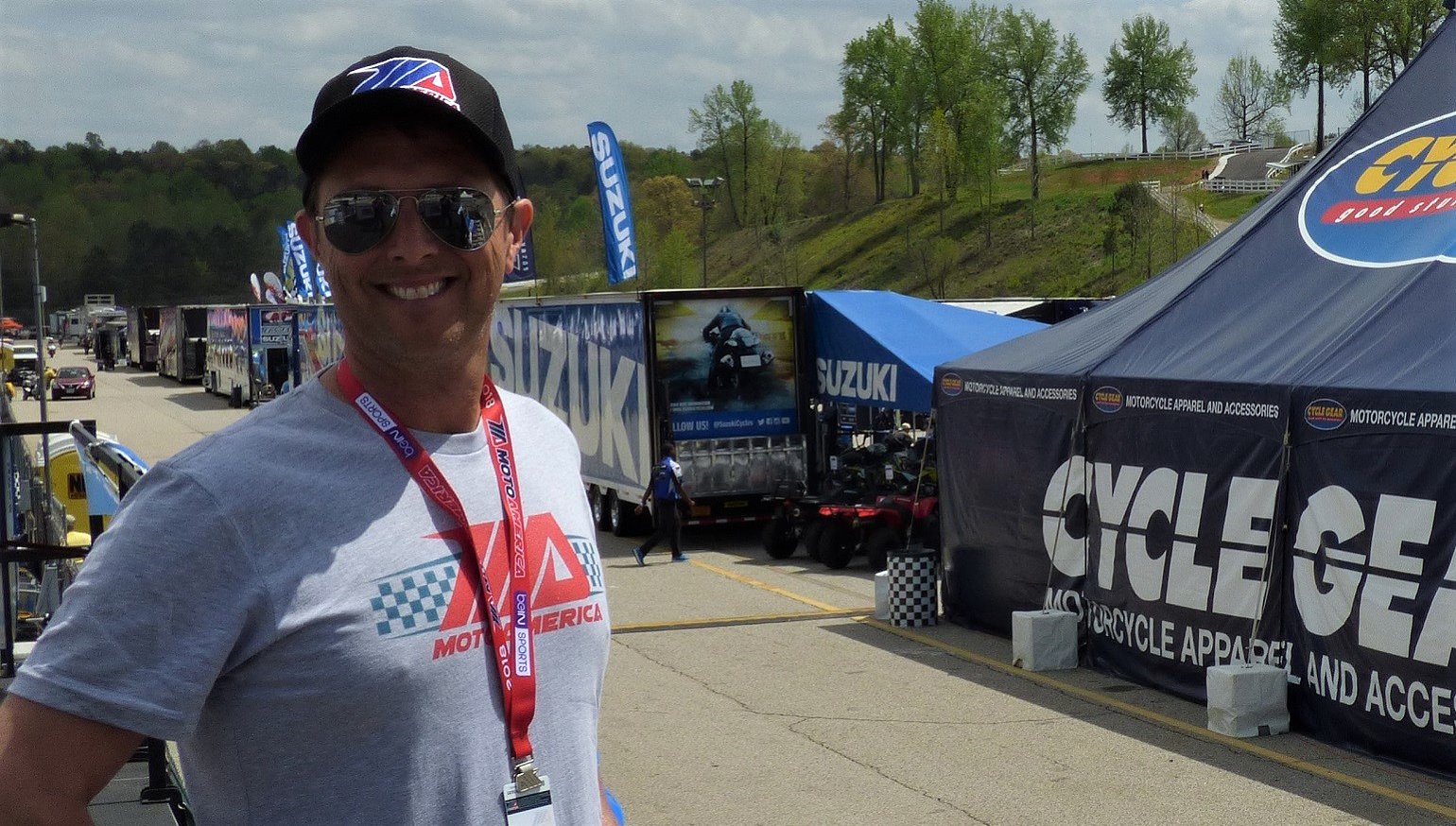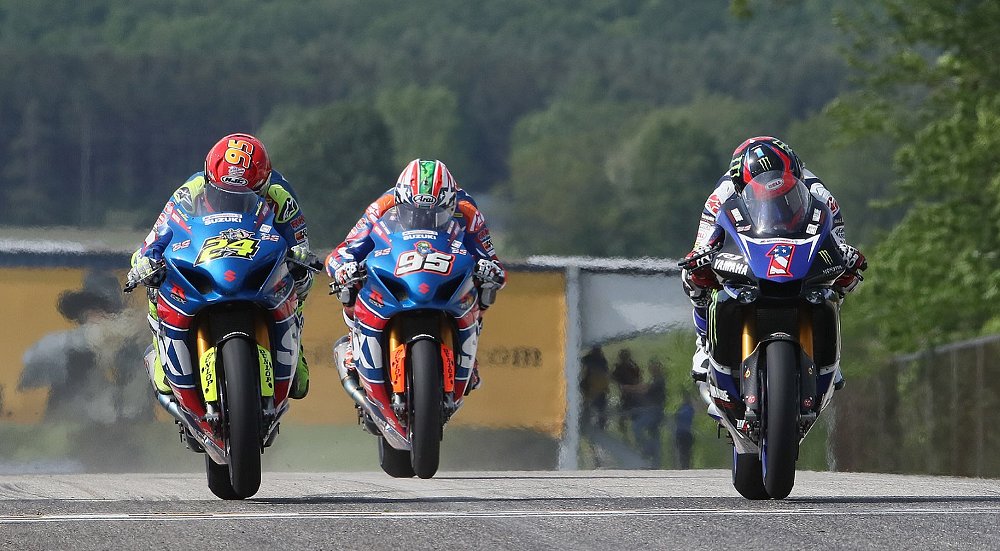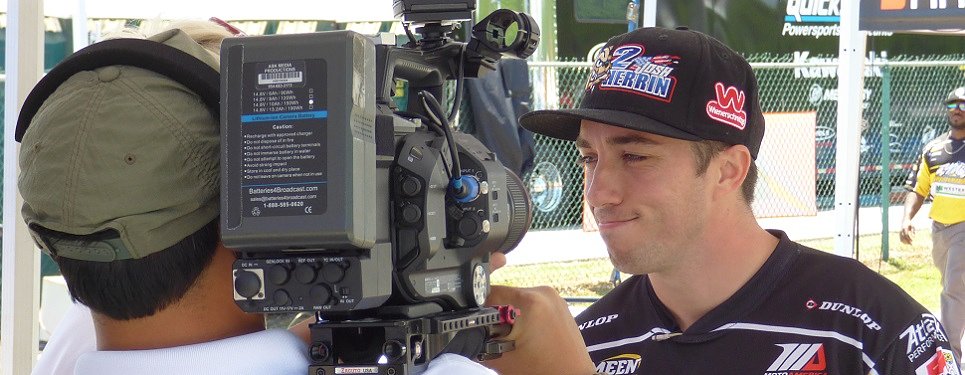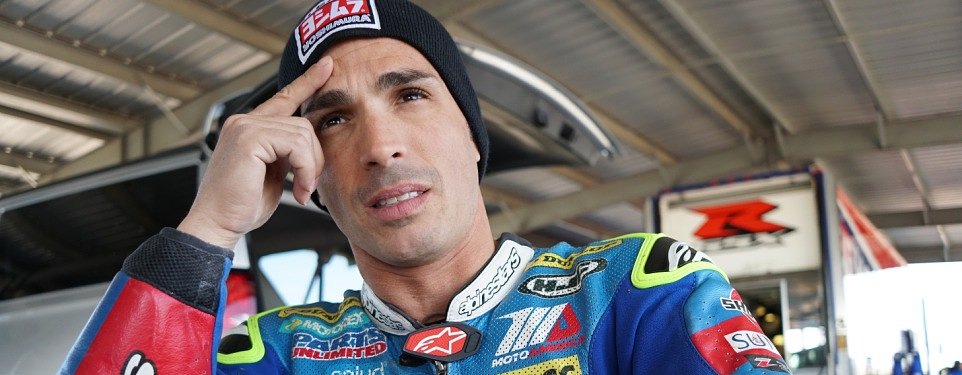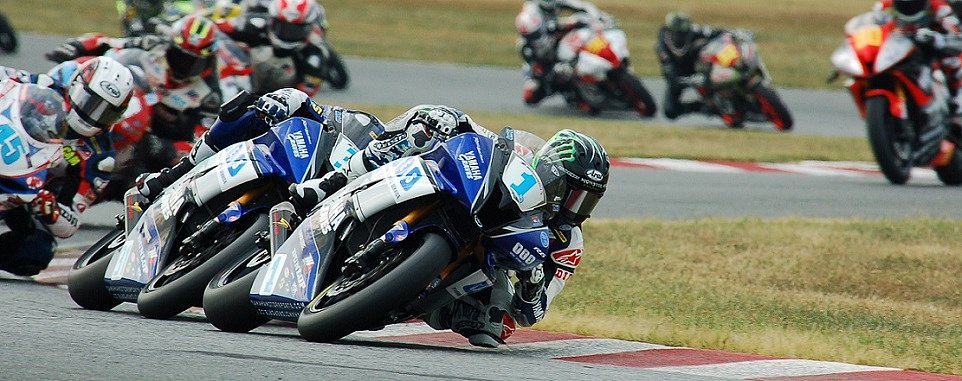Can a guy who has worked on projects ranging from building the iTunes store to promoting the Grateful Dead tour — but who a year ago didn’t know a GSX-R1000 from an RC 390 — bring new audiences to U.S. motorcycle roadracing?
MotoAmerica is betting on it. That man is Alec Marshall and he is coming in from outside the motorcycle industry to provide some new strategies for building the audience. Just like motorcycling in general in the United States, roadracing faces the demographic challenge of an aging audience. While MotoAmerica has taken significant strides in its first three years to stabilize Superbike racing in the United States, gain television coverage and win over a formerly disgruntled paddock of racers and team owners, it won’t thrive in the long run unless it creates new fans.
That’s Marshall’s job. He's changing not only the way MotoAmerica is telling its story through social media, but also changing the experience at the track on race weekends. For example, the opening round at Road Atlanta featured a Tony Hawk and Friends show and the round next weekend at Virginia International Raceway includes a country music concert on Saturday night featuring High Valley, Chase Bryant and more. I asked him about some of his plans and strategies.
Common Tread: MotoAmerica is definitely a new direction for you. How did you get involved in motorcycle roadracing?
Alec Marshall: For the past few years I owned an agency (Silicon Drive) that focused on entertainment marketing and using social and digital media to grow value. As part of that, we ended up doing the social and digital marketing for the Grateful Dead tours. And interestingly enough, they have a very similar problem to what the motorcycle industry is facing now, and our sport in specific. The audience is sort of aging out. So there has to be some strategy to either engage a new audience or get that core audience to go to more events. For the Grateful Dead audience, they’re getting up in their 60s and to get them to go to a whole bunch of events is probably out of the question. So, a big part of our strategy... meant talking to a younger audience.
I came in and became involved with MotoAmerica a little over a year ago and I was talking to them about their strategies and what they’re looking at. And we realized they were facing almost exactly the same problem. It’s not that the audience is getting too old to go anywhere. It’s more that the races have been so focused on people who are fans of that, and fans of the industry already, and those audiences are declining.

CT: As an outsider to motorcycling and racing, what can you bring from your previous work that’s applicable here?
AM: Apple is actually a perfect example. When I went in there, the first thing I was dropped into was the launch of the iTunes store. Everybody kind of looks at the iTunes store now and takes it for granted, but downloading music, and paying for it, and breaking up albums, and only having songs available in a little box that you carried around and you had to buy that box from one company, all of that didn’t make sense. We had to do a lot of work in order to make them make sense. A big part of it is making it easier and making it simple to understand. A second part is making the tech attractive. And the third part is staying your course and capturing enough people that it becomes a movement.
I remember when we had six percent market share and I was teased by my Windows friends. Now it’s the biggest company in the world.
CT: So how do you apply that to motorcycle roadracing?
AM: As we came in to look at the races, I focused on two things. One, if we don’t introduce it to a new audience, those audiences aren’t going to see motorcycles as relevant. And that’s going to be a problem for the industry. But the other piece is that in terms of sports, it’s one of the most exciting, dramatic and individualized sports that I’ve ever seen.
The way I see it, you don’t have to like motorcycles to enjoy this sport. That’s a brand new thought. That’s not something that occurred to people inside the industry, who have been doing it the same way for so long.
I don’t ever see myself playing tackle football again. I’m 5-11, 150 pounds. It’s just not going to happen. Yet I watch football all the time. I identify with specific players. I identify with specific teams. I’ll follow them through the season. And yet I never have any intention of getting involved in it.
With this, you have these young, gallant, strong, athletic men and women strapped to machines with brands that everybody identifies with and they kind of understand but they want to learn more. There's a certain level of techiness. To me, we can take advantage of those components to speak to Millennials and younger.

CT: This is something that’s been discussed by our readers and maybe I’m a little skeptical. You believe it’s possible to get someone who has never ridden a motorcycle to come to a motorcycle race.
AM: I do. I do. And I have a good story for it. Before I was interested in doing this, I went to Laguna Seca and I took my eight-year-old daughter, who had never even touched a motorcycle. We went around the vendor tents, we went around the paddock, we watched the races for a while, we went to other track events for a while, and spent an entire day just kind of looking around. By the end of the day, she knew several riders’ names, she had sat upon one of the bikes, got that same gleam in the eye that I was talking about, and all of a sudden she was interested in a sport that had absolutely no connection for her previously. If she is the farthest distance from a 35-year-old avid motorcyclist, then that’s the challenge accomplished. I got her to look. These days, with the number of messages that hit us, getting somebody to look is a big deal.
CT: The beIN Sports TV package is the best one U.S. roadracing has had in many years, but there are always people who have cut the cable or don’t want to pay for extras on their cable bill and they always ask why you aren’t streaming online like MotoGP or World Superbike. What’s the strategy there?
AM: Monday, we’ll be airing the race from Saturday on YouTube. People all over the world can watch and stream in a really, really easy way they’re already used to. Streaming by subscription — I don’t think I would put it in our plans for several years to come. I want as many people to watch as possible, so I prefer the public platforms, the kind of platforms like YouTube, Instagram, even Amazon. I like the idea of those because I don’t have to ask people to buy something to watch our race. If we have to attach an advertisement to that or a sponsorship, it’s my preference that I get it into their hands for free.
It’s a perfect sport for a multi-screen environment where you can watch an entire race on your phone and not be fatigued at all. You can stream it, you can pause it, you can do all of the things that kids are used to doing. And you don’t lose attention. With a soccer game, it’s going to be three hours. To watch it on a phone is not reasonable. And if you’re watching football, it’s four hours. It’s harder.

CT: When I look at motorcycle racing, the one discipline where I see little kids in the stands is Supercross. Is there something you can learn from Supercross that can be applied here?
AM: More fire.
CT: And lasers?
AM: Yeah, more fire and lasers. If I had lasers, I’d be set. (laughs).
No, Supercross has done a good job of doing exactly what I’m talking about. It’s becoming relevant to a lot of people and they’ve used a lot of outside techniques. In a former life, I worked with the UFC. I helped them launch their streaming platform. The interesting thing that they did is they focused on centering the crowd. They got them all hyped up. There’s music, there’s DJs, there’s all this stuff going on, and then you have this fight and the fight takes about 10 minutes. In those 10 minutes, everybody is already ramping. Supercross has done a really good job of capturing that. They have the closed container. They have all the activities going on. They have the lasers and fire. That catches people’s eyes.
What I’m after is kind of the glamor of the glory days of roadracing and the exclusive feeling and elegance of Formula One. We have some differences. We’re on a three-mile track and the audience is spread around. It’s difficult to get them to center in and cheer for someone. We don’t have a closed stadium. Those are challenges to work around so we focus on different directions to capture their attention.
CT: Given those challenges, you are doing a lot to change the experience of a weekend at the race track, too.
AM: We’re making the events more accessible… to a new audience. We’re starting to have bigger screens and Jumbotrons so you can follow the race, you can see who’s winning, and root for people. You can get up close to them after the race is over. There’s a whole new level of relevance when you get somebody to root for an individual rider.
We are adding to our events with things that fill out the whole family adventure. Here, we’ve got Tony Hawk. We’ve got a whole kids’ zone, so there’s actually a lot for kids to do. We’re adding things to enhance the camping experience. We’re doing a lot to change the face of the events.

Expect a lot more music. I love what music does to an event. I love that people who don’t necessarily follow a specific type of music will listen to other kinds. That’s a sign to me that if they don’t follow our sport but I can get them to look at ours, then I’ve done my job. We’re looking at what interests our core customers have and then one degree of separation out from that. Their connections. What are their interests and what can I do to combine those two and get that person to invite their friends to come to the race?
CT: What are the advantages and disadvantages for someone like you, coming in from outside the industry and having to learn everything from zero?
AM: The phrase “drinking through a fire hose” has been really applicable this year. I may not know the nuts and bolts and specifics of what’s going to make one rider faster than another, but I can certainly come in and represent what the teams are feeling, what the riders are feeling, and how that relates to the emotions out there in the audience. And that’s been the key thing I’ve focused on. What is going to make this shine in this audience’s eyes, that audience’s eyes? How are we going to get to those people?
Having people like Wayne (Rainey) who have been embedded in this sport, any time I say anything wrong I’m corrected in about half a second, but most of the time I stick to what I know and they stick to what they know. They’ve created an unbelievable product. All I’m doing is trying to get that message out to people.
CT: Is there any advantage to being an outsider?
AM: I need things simpled down. So when I’m having conversations about our broadcasts I hear things that I haven’t heard before, and I’ve been in a lot of different types of media. I have them stop and explain it to me. For them to be able to explain it to me means that I can turn around and explain it to audiences that have never heard it before, either. That’s a key advantage.
Thank God I have people who have listened to this idea — the leadership of this group is amazing — and they heard me when I said we have to talk to other people. I was lucky at that, but I had behind me a lot of experience with companies that weren’t relevant to a lot of people and became relevant to lots of people.
I see nothing but opportunity. I have no compunction in saying this will very likely be the most popular sport in the world in 10 years. That is something that is radical to say. But who would have thought that UFC would be one of the most profitable sports of all time? Two guys pummeling each other. I don’t mean to dismiss the athleticism, but it’s not relevant to most people.
This comes at a time when other sports, especially team sports, mostly the ones based on broadcast media, are seeing declines in their audience. We’ve seen, year over year, a pretty significant growth in our audience. If we were on a different scale, we would be already the most popular sport.




